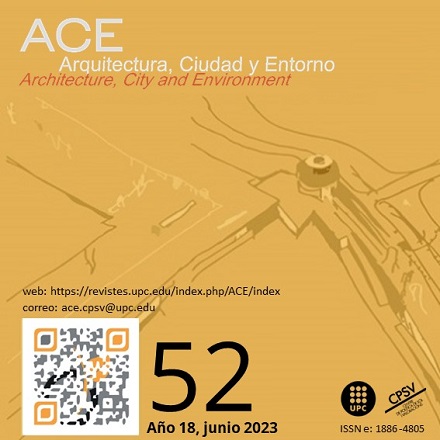Impact of Architecture and its Conservation on Crime Reduction
DOI:
https://doi.org/10.5821/ace.18.52.11693Keywords:
security by design (CPTED), architecture and security, real and perceived security, iter criminisAbstract
Analyzing the crimes of the Penal Code, it is concluded that 47.79% of the criminal offenses count with influence of the environment of where they are committed. Relating these 47.79% offenses with the crime statistics, it is verified that more than 95% of the crimes committed in Spain during 2018 and 2019 counted with the influence of the physical space of where they occurred. The study quantifies the influence of architectural parameters with each of the phases of the crime (ideation, materialization and escape/establishment) and the feeling of insecurity. The parameters are extracted from UNE-EN 14383, CPTED methodology and other authors. It is concluded that all the architectural parameters studied influence in some way the real and perceived security. Lighting, maintenance, visibility, installations, the façade and its openings are the most influential in all stages of the crime. In the prevention phase, the facilities, facade and their openings are also influential in the prevention phase. In the materialization phase, the evacuation routes, openings and accesses. And in the restoration/escape phase, the evacuation routes and the interior layout. Architecture is not the only element that influences offenders, but the article shows that it does have a major impact on crime. Therefore, it is proposed to use architectural resources that increase real and perceived security. This would increase the security of the potential victim and reduce crime.
Downloads
Published
Issue
Section
License
| INTELECTUAL PROTECTION CRITERIA |
At this moment, it is count with the "Oficina Española de Patentes y Marcas", while global protection it is being processed by the World Intelectual Property Organization (OMPI/WIPO). Nevertheless the International Standard Serial Number Office (ISSN) has given the following numbers ISSN: 1886-4805 (electronic version) and 1887-7052 (paper version). All articles will be peer reviewed, using double blind reviewing. |
| COPYRIGHT |
The article contents and their comments are authors exclusive liability, and do not reflect necessarily the journal editor commitee's opinion. All ACE published works are subject to the following licence CC BY-NC-ND 3.0 ES http://creativecommons.org/licenses/by-nc-nd/3.0/es/ It implies that authors do not hold nor retain the copyright without restrictions but only those included in the licence. |





































